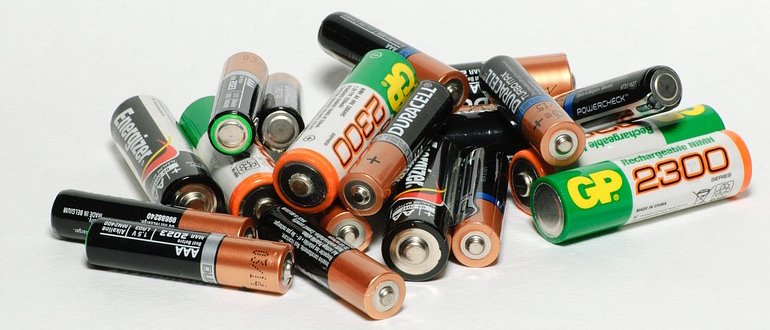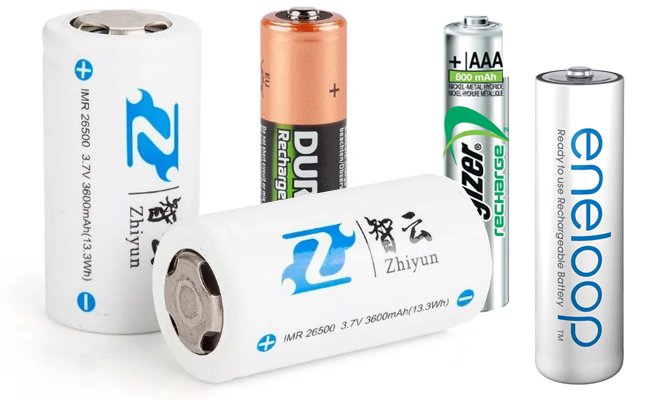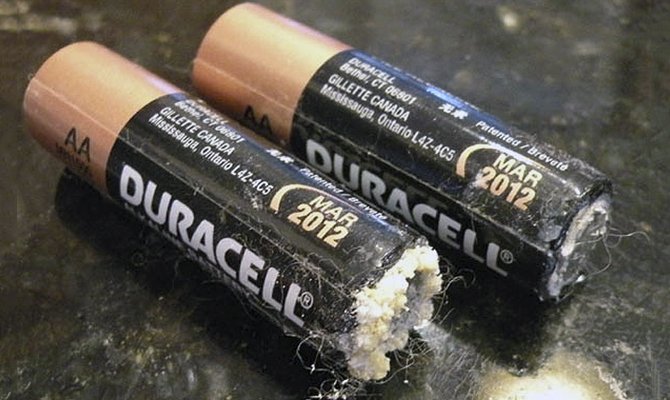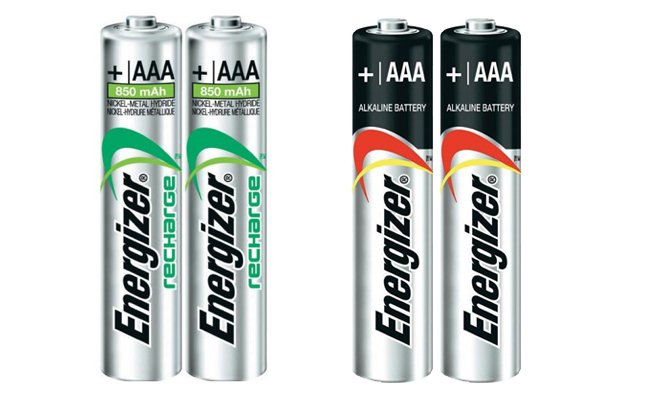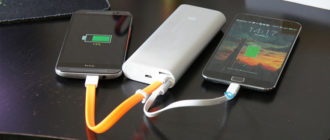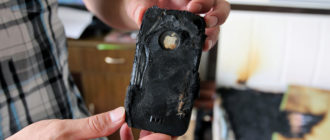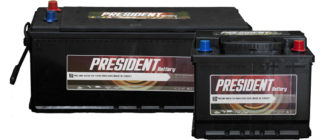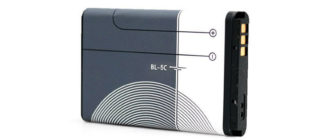In the modern world there are many devices and rechargeable batteries - this is already a necessity. While some change one battery after another, others simply charge the battery. For the product to last as long as possible, it is necessary to follow the recommendations on charging, operation and select them in accordance with the requirements of the devices.
Content
What batteries can be charged
Only rechargeable batteries can be charged on the housing of which this is indicated. It is forbidden to insert the most ordinary models into the memory and it does not matter what type they are - AA or smaller.
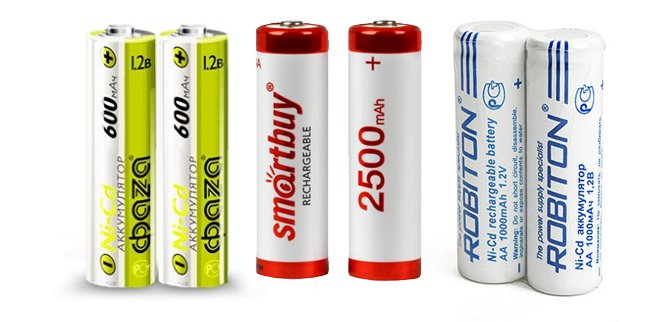
If you violate the safety rules, then be prepared for:
- Nothing will happen, then you can be attributed to the lucky;
- The battery will hiss and deteriorate;
- Possible overheating, fire and even explosion;
- Short circuit in the network.
Depending on the materials, batteries are of the following types:
- Nickel metal hydride Ni-mh;
- Nickel cadmium Ni-cd;
- Nickel zinc Nizn;
- Lithium ion Li-ion;
- Lithium polymer Li-Pol.
A nickel-cadmium battery has a memory effect, so it needs to be fully discharged and charged. Nickel metal hydride also has a memory effect, but it is minimized.
Battery cells have standard sizes similar to classic models:
- Pinky (AAA)
- Finger-type (AA).
- Thumbelina type C.
- Keg or Type D Battery
- Crohn or Corundum.
- 1/2 AA.
- Big square.
Such sizes can be both batteries and rechargeable batteries because of this it is very important not to confuse. It is worth noting that there are no tablet batteries, with the exception of a limited series for hearing aids.
There are also Li-Ion batteries of the following sizes, and they can be charged:
| Designation | Height mm | Diameter mm | Voltage |
|---|---|---|---|
| 10180 | 18 | 10 | 3,7 |
| 10280 | 28 | 10 | 3,7 |
| 10440 (AAA) | 44 | 10 | 3,7 |
| 14250 | 25 | 14 | 3,7 |
| 14500 (AA) | 50 | 14 | 3,7 |
| 15270 | 27 | 15 | 3,7 |
| 16340 | 34.5 | 17 | 3,7 |
| 17500 | 50 | 17 | 3,7 |
| 17670 | 67 | 17 | 3,7 |
| 18500 | 50 | 18 | 3,7 |
| 18650 | 65 | 18 | 3,7 |
| 22650 Type B | 65 | 22 | 3,7 |
| 25500 type C | 50 | 25 | 3,7 |
| 26650 | 65 | 26 | 3,7 |
| 32600 Type D | 61 | 34 | 3,7 |
The type of battery is selected for specific devices. AA is suitable for cameras, but for some toys a barrel is required. The most popular are still 10440, 14500, 18650, AA and AAA.
Battery capacity can vary from 150 mAh to 6000 mAh. The larger the capacity, the more expensive the device. The capacity value is indicated on the case in capital letters. The larger the capacity, the longer the device will be able to work.
Why you can’t charge ordinary batteries
It is not recommended to use the charger to charge tablets or any other batteries. If alkaline (alkaline batteries), then you should not try.
Disposable cells have a completely different principle of operation - ions come from the electrolyte to the electrodes. Over time, their supply runs out, then the battery runs out. If you pass the current through a conventional model, then the recovery process simply does not happen. For example, during operation of manganese-zinc batteries, the zinc electrode will dissolve.
Batteries are designed so that the performance of electrolytes and electrodes can be returned to the original version. When such a battery is connected to the charger, oxygen and hydrogen ions are converted from the electrolyte. The recovery process begins, where hydrogen acts as a catalyst for the conversion of the cathode to lead, and oxygen - the anode to lead dioxide.
How to determine if it is a battery or battery
Before buying, you should know a few nuances that will allow you to determine ordinary batteries from rechargeable:
- Pay attention to the inscription on the case. If there is a capacity, then this is the battery, it is indicated in mah (milliamperes) per hour. The higher this figure, the longer it will last.
- If there is a rechargeable inscription on the case, then it is rechargeable.If the inscription sounds like do not recharge, then recharging is prohibited.
- Pay attention to the cost of the product. Conventional batteries will cost less than batteries. The price directly depends on power indicators and recharge cycles.
- Rechargeable batteries have a greater margin of safety. They last a long time, charge gradually, but ordinary batteries cease to function when connected to more powerful devices.
- The battery boasts a voltage of ~ 1.5 V, but the battery - ~ 1.2v, ~ 3.7v. The crown in both cases will have 9 volts.
- If the markings on the case contain the letters: R, CR, LR and FR, then this is a battery.
- If on the case in the marking is present: NiCd, Ni-MH, Ni-Zn, HR, ZR, KR, li-ion or li-pol, then this is a battery.
Following simple points, everyone can determine for themselves the necessary nutrients.
In the picture on the left is the battery, since the case says: 850 mAh, rechargeable and nickel metal hydride. On the right is the battery, since only Alkaline (Alkaline) is written on it.
How to charge the battery correctly
- Before charging at home, read the instructions for the device and recommendations from the manufacturer.
- Modern batteries do not have a memory effect, so you do not need to engage in battery buildup. With the exception of nickel-cadmium (Ni-Cd) batteries.
- Observe the temperature regime, do not insert into the charger at temperatures below 5 degrees and above 50 degrees Celsius.
- Choose a charger specifically for the batteries, well, if it was done right away. Keep in mind that the slower the charge of energy, the better.
- Do not leave the battery in the charger for longer than a day. If they are not charged, then there is no point in continuing.
Important! When charging, the battery will heat up, this is normal, but it should not be very hot, if it seems to you that it is very hot in the memory, then stop the procedure.

How long does it take to charge batteries
To correctly determine the battery charging time, use the standard formula:
X (hours) = 1.4 * Y (mA * h) / Z (mA), where 1, 4 - the coefficient is used, because not all the current goes into the battery charge, you can call it a discount on heat transfer.
Part of the current goes into heat, so the battery overheats.
If the capacity is 2400 mAh, while the charging current is 150, then according to the formula it turns out: 1.4 * 2400/150 = 22.4
It takes up to 22 and a half hours to charge a 2400 mAh battery with an incoming charge of 150 mAh. Some chargers do not determine the charge of batteries, voltage is supplied continuously, even if the battery is already fully charged. Such an approach can harm the battery by shortening its shelf life or rendering it unusable due to overheating.
In order to simplify your life, it is recommended to use modern smart chargers that are equipped with a charge indicator. They can provide information on how many milliamps (mA) were transferred to the battery, and since the capacitance is indicated on the case, then by a simple subtraction, you can find out how many percent the battery is charged. Also, after charging is complete, the device itself turns off.
Have questions or have something to add? Then write to us about it in the comments, this will make the material more complete and accurate.

